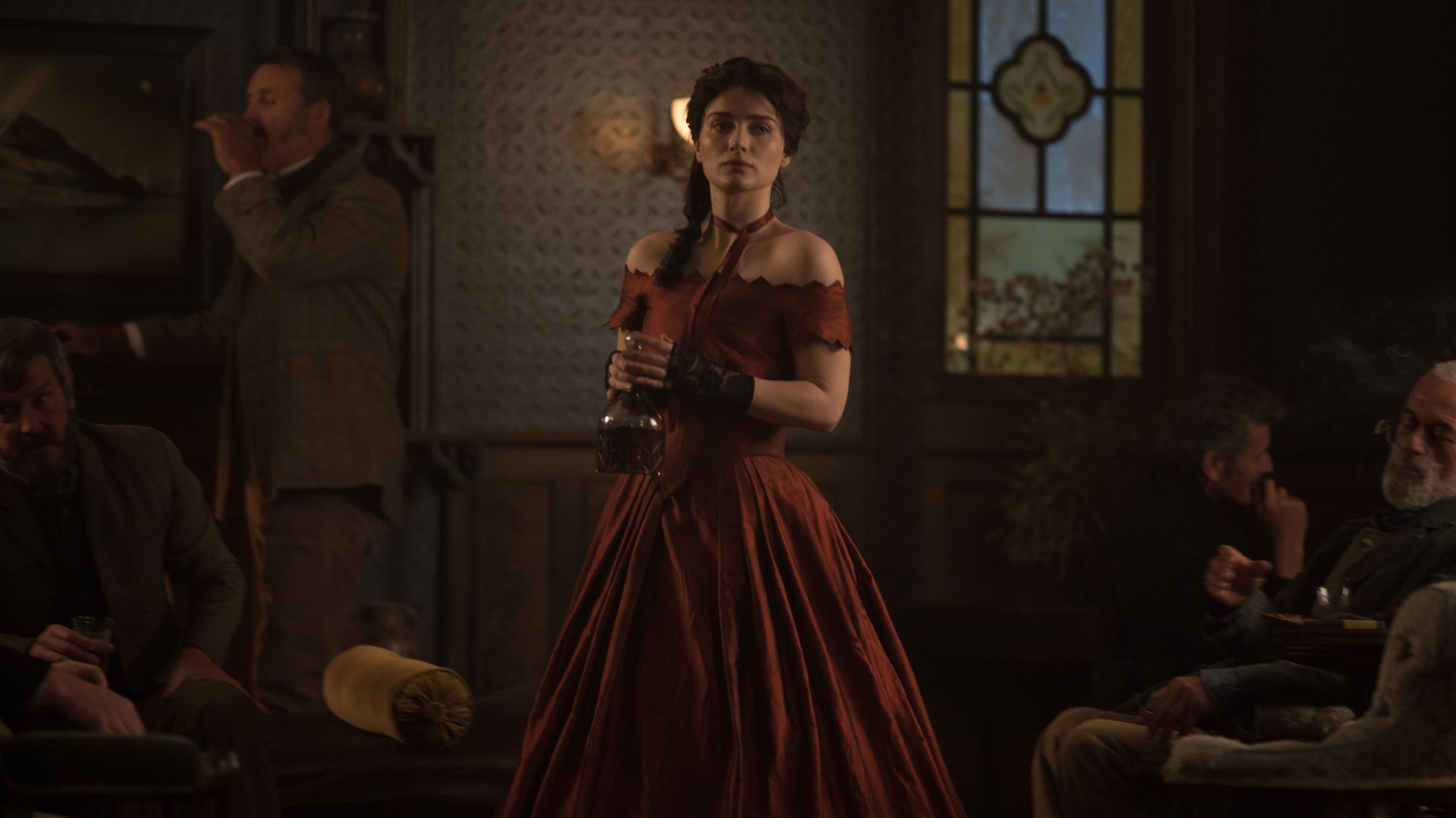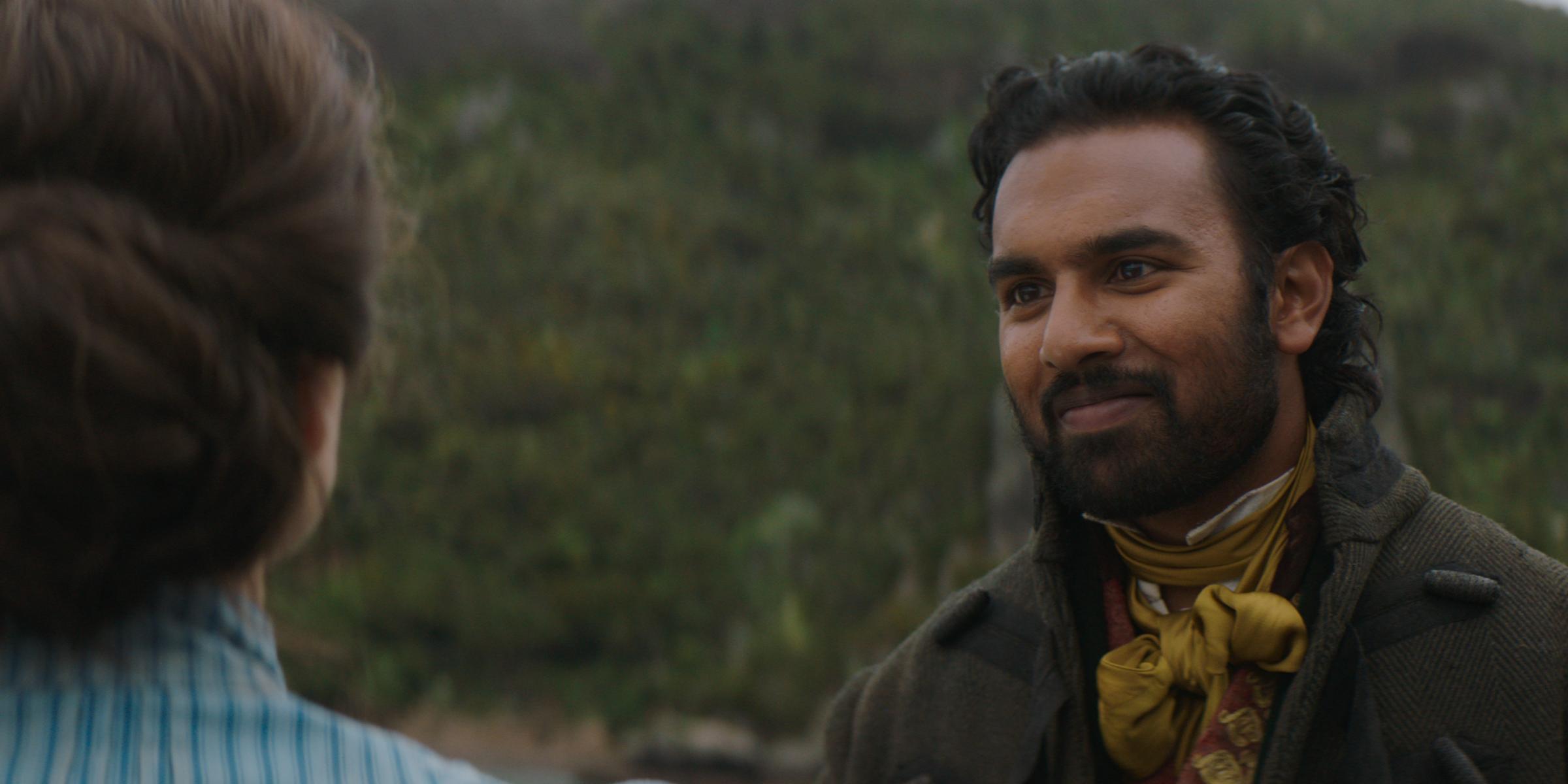Star-crossed lovers. Wheels of Fortune. The alignment of planets. Striking gold, and using toxic mercury to extract the pure metal from ore. Debt, and its tendency to yoke the naive to the corrupt. Twins, siblings, doubles, assumed names, mistaken identities. Free will and fate. These are the metaphors and motifs of The Luminaries, an enchanting, enthralling miniseries based on Eleanor Catton’s Booker-winning 2013 novel, that will finally debut stateside via Starz on Feb. 14.
Set amid the New Zealand gold rush, the BBC-TVNZ co-production opens with two very different portraits of its protagonist, a young woman named Anna Wetherell. The first time she appears onscreen, it’s 1866, and Anna (a guileless but bright Eve Hewson, from The Knick) is a mud-caked, almost spectral figure darting through the night in a tattered dress and coat. A flash of gold dust briefly illuminates the forest when her hem catches on a log. Nearby, a gun fires, a man falls to the ground and she keeps running until she collapses at the door to a cabin. Quickly discovered by two men on horseback, Anna—known locally as a prostitute and an opium addict—is imprisoned on charges of vagrancy, public intoxication and attempted suicide.

Cut to nine months earlier, when a squeaky-clean, rosy-cheeked and cheerful Anna meets a kind young man, Emery Staines (Himesh Patel of Tenet), on the deck of a ship that’s about to arrive in Dunedin. He’s lying on the floor, one level below her; then he vanishes, replaced by the cross-shaped shadow of the boat’s masthead, before rematerializing behind her. “Can you believe it?” he exclaims, staring up at the albatross she’s been watching. “They’re proper magic. Incredible good luck, as long as you don’t shoot one dead with a crossbow.” The portentous exchange, its deft interplay between visual and verbal symbolism typical of this layered show, has an electrifying effect on both travelers. Anna agrees to meet Emery for dinner at his hotel.
The date never comes to pass, and it will take most of the six-episode series to trace her long devolution into the battered, traumatized creature who wakes up in jail less than a year later. Relative innocents who’ve come to seek their fortunes in the gold fields, Anna and Emery are soon waylaid by the savvy tricksters who flourish in such communities. She crosses paths with Lydia Wells, a striking, gregarious, street-smart woman with a cascade of wild red hair that recalls Waterhouse’s rendering of the Lady of Shalott. A fortune teller by trade, Lydia (a witchy, magnetic Eva Green) functions more as a party promoter, entertaining a population that skews heavily male with elaborate soirees and, thus, earning a fine living without ceding her bodily autonomy. Easily the story’s most fascinating character, Lydia has plenty to say about fate but thrives by imposing her will on others—including Anna, whom she manipulates into becoming her apprentice.

Lydia’s machinations will be tested by the gravitational pull between her new underling and Emery, who are what is known as astral twins: two people born at the exact same moment who are said to share a destiny. Like so much classic literature, The Luminaries asks whether we can, or should, escape the circumstances that life hands us—and whether people are free to lie, cheat and even kill to get what they want, or if some greater morality governs the universe. What distinguishes it is the vividness of the characters, and a gold-rush milieu made up almost entirely of people running from bad luck (many of them, we’re told, non-inheriting younger sons).
It’s remarkable that the miniseries, which distills a novel of more than 800 pages to just six hours of screen time, retains such thematic depth. Catton—who adapted the book herself, in a process that she has said took seven years—isn’t precious with her intricate, psychologically rich prose. She smartly reorders and reframes the story, trimming a lengthy cast of characters without losing the sense of New Zealand as a place where adventurers from Europe and Asia have disrupted the Māori civilization established there centuries earlier. Director Claire McCarthy squeezes at least a thousand words’ worth of meaning out of every complex shot. The experience of watching a TV show will never feel quite the same as losing yourself, for weeks, in a fat, historical tome. Catton understands that. Instead of making her second telling of The Luminaries a pale imitation of its predecessor, she offers up yet another set of twins: two consummate works in two different mediums.
More Must-Reads from TIME
- Caitlin Clark Is TIME's 2024 Athlete of the Year
- Where Trump 2.0 Will Differ From 1.0
- Is Intermittent Fasting Good or Bad for You?
- The 100 Must-Read Books of 2024
- Column: If Optimism Feels Ridiculous Now, Try Hope
- The Future of Climate Action Is Trade Policy
- FX’s Say Nothing Is the Must-Watch Political Thriller of 2024
- Merle Bombardieri Is Helping People Make the Baby Decision
Contact us at letters@time.com